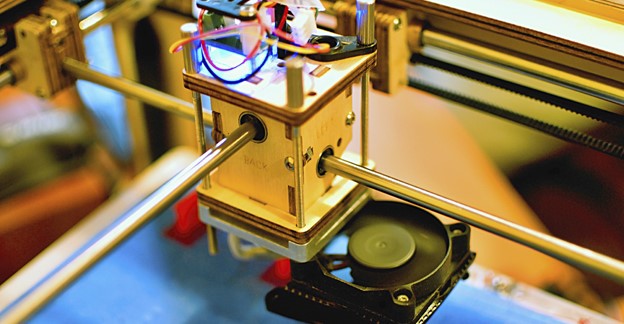(NEW YORK) December 15, 2016 – Reed Smith LLP today released “3D Printing of Manufactured Goods: An Updated Analysis,” a comprehensive new white paper that provides in-house counsel and industry leaders with an in-depth look at the most recent developments and legal issues surrounding the rapidly evolving technology of additive manufacturing.

“3D Printing enables astounding possibilities, but its use also raises novel legal challenges and risks,” said Silicon Valley partner Colleen T. Davies, one of the leaders of Reed Smith’s 3D Printing Task Force. “As is typical with technology and innovation, 3D printing is moving faster than the law and regulations that guide its use. Our cross-disciplinary Task Force is working with clients in a variety of industries on how to address the legal frameworks that impact their use of 3D printing, and this white paper explores many of the most challenging issues.”
Chapters in the new white paper focus on a wide range of fast-developing topics:
- Constitutional Issues (regarding 3D printed guns): The first chapter delves into public safety, national security, and constitutional concerns over the 3D printing of guns. Recent litigations have yet to determine whether there is a Second Amendment right to 3D-print firearms, or whether Computer Assisted Design (CAD) files are expressive speech under the First Amendment.
- Commercial Litigation: The second chapter looks at the developing case law and commercial litigation considerations specific to a full range of 3D printed objects. Authors evaluate choice of law, intellectual property, tax, confidentiality, indemnification, covenants and quality standards, representations and warranties, and insurance provisions for mitigating litigation risk in commercial contracts.
- Product Liability: The third chapter focuses on product liability, an area of law where great uncertainty remains concerning its application to 3D printing. Courts have yet to resolve product liability issues arising from the use of 3D printing, and the technology will undoubtedly continue to present challenges to traditional theories of tort liability.
- 3D Printing/Component Parts/Raw Materials: The fourth chapter examines environmental, safety, and liability concerns, and myriad other issues associated with raw materials and component parts. This is a critical area for manufacturers and suppliers, who could be liable if 3D printed products include defects that injure end-users.
- Insurance Issues: The fifth chapter covers insurance issues, particularly the adequacy of existing insurance and whether additional coverage is needed, which have become especially pressing issues as the proliferation of 3D printing has generated new challenges for insurers in identifying liable parties.
- IP Issues: The sixth chapter analyzes 3D printing’s potential for disrupting traditional Intellectual Property rights, and how further innovation in 3D printing technologies and techniques may help protect IP.
- Data Privacy: The seventh chapter evaluates privacy and data privacy issues specific to a broad range of industries. Consequences for additive manufacturers include everything from the compromise of confidential information stored by the printer, to significant risks to the integrity of processing techniques or design schematics.
- Environmental Safety: The eighth chapter highlights the more common environmental and occupational health and safety issues that can arise with prevalent 3D printing technologies. The authors discuss the implications of exposure to hazardous materials and wastes with various 3D printing techniques, as well as compliance issues for manufacturers under existing regulatory policies.
